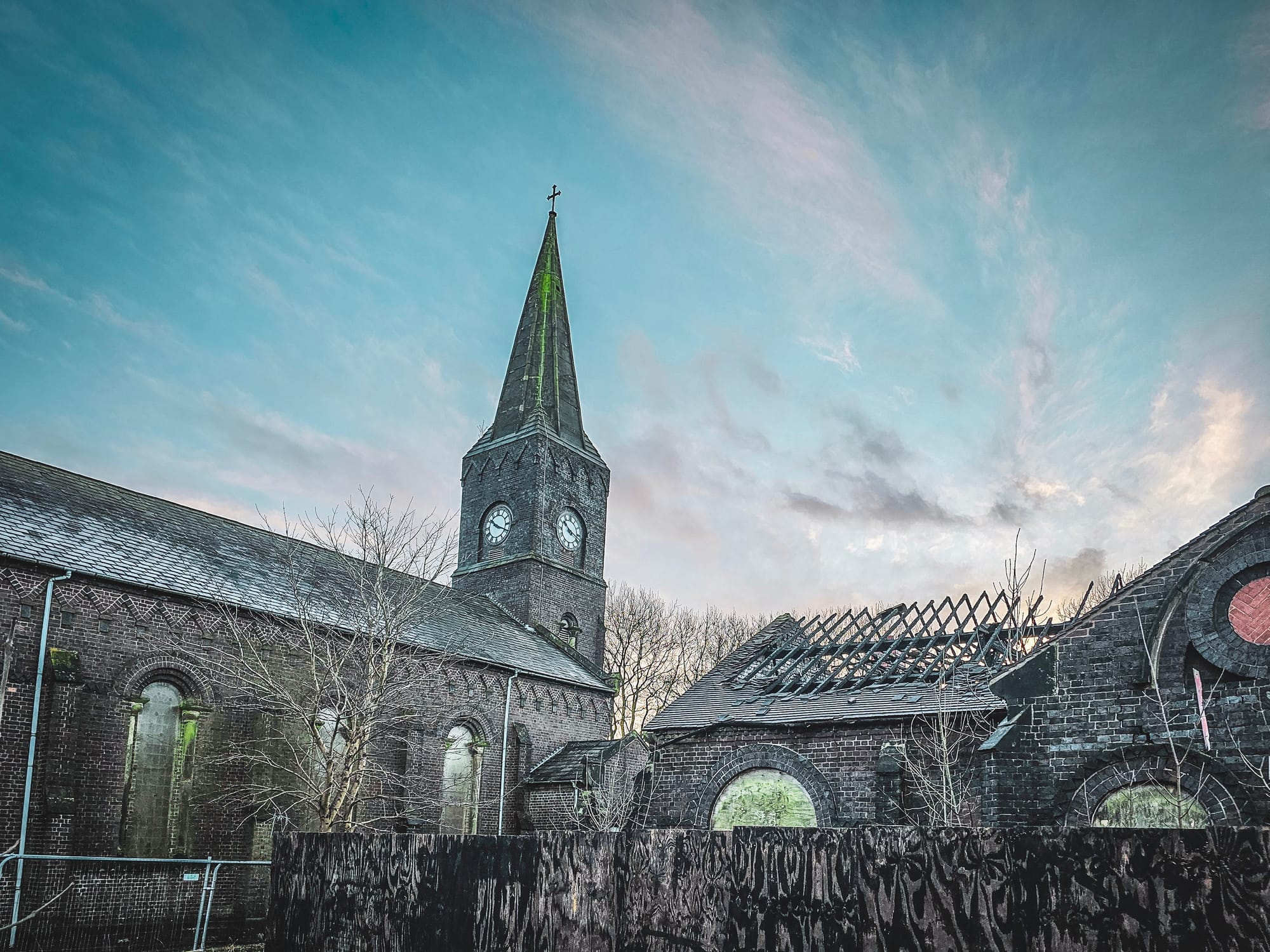St John the Evangelist Church, known also as the Parish Church of St John the Elder, stands as a landmark in Goldenhill, a suburb of Stoke-on-Trent. Originally rooted in a small rural community, the church, was built between 1840-41. Despite its historical significance and once pivotal role in the community, the church now faces a period of neglect. Closed in early 2013 due to a dwindling congregation, it represents a challenge of preservation and a poignant reminder of the area's transformation over the centuries.
Watch my video walk around here

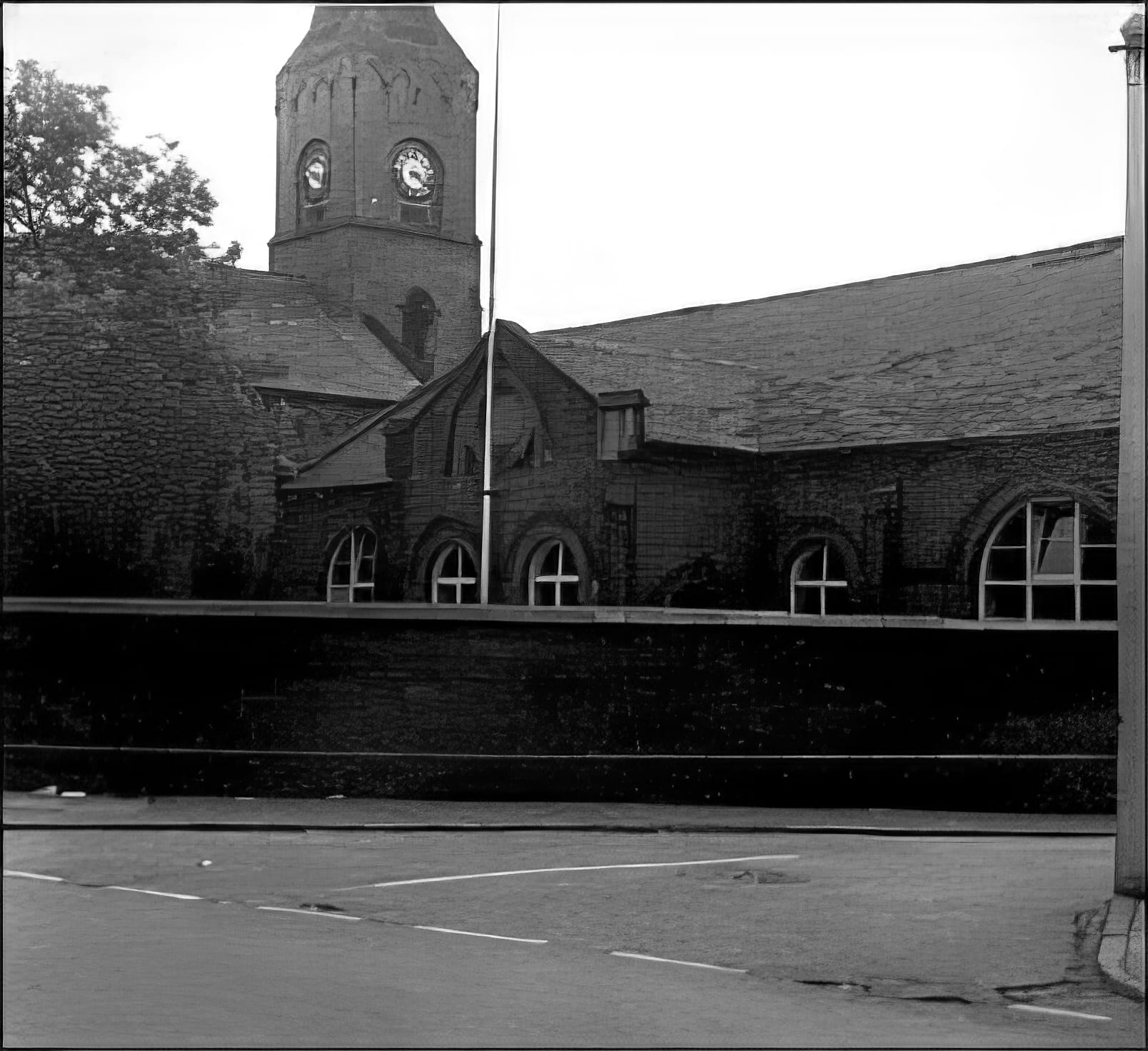
Goldenhill's transformation from a quaint rural settlement to a modern Stoke-on-Trent suburb is a narrative of significant historical change. Originally not featured in the Domesday Survey of 1086, it later emerged in historical records such as the Tunstall Court Rolls of 1670 and Plot’s Map of Staffordshire in 1682. This evolution was markedly influenced by the Industrial Revolution, which reshaped Goldenhill's identity. The construction of the Trent and Mersey Canal and the Harecastle tunnel, along with the establishment of the Potteries Loop railway line in 1873, which included a station at Goldenhill, further connected the area to major industrial centres, accelerating its economic growth and industrial significance. It was pivotal in the town's growth and underlined its strategic importance in the industrial landscape of Staffordshire. These advancements facilitated the transportation of both raw materials and finished goods, crucial for the area's burgeoning pottery industry.
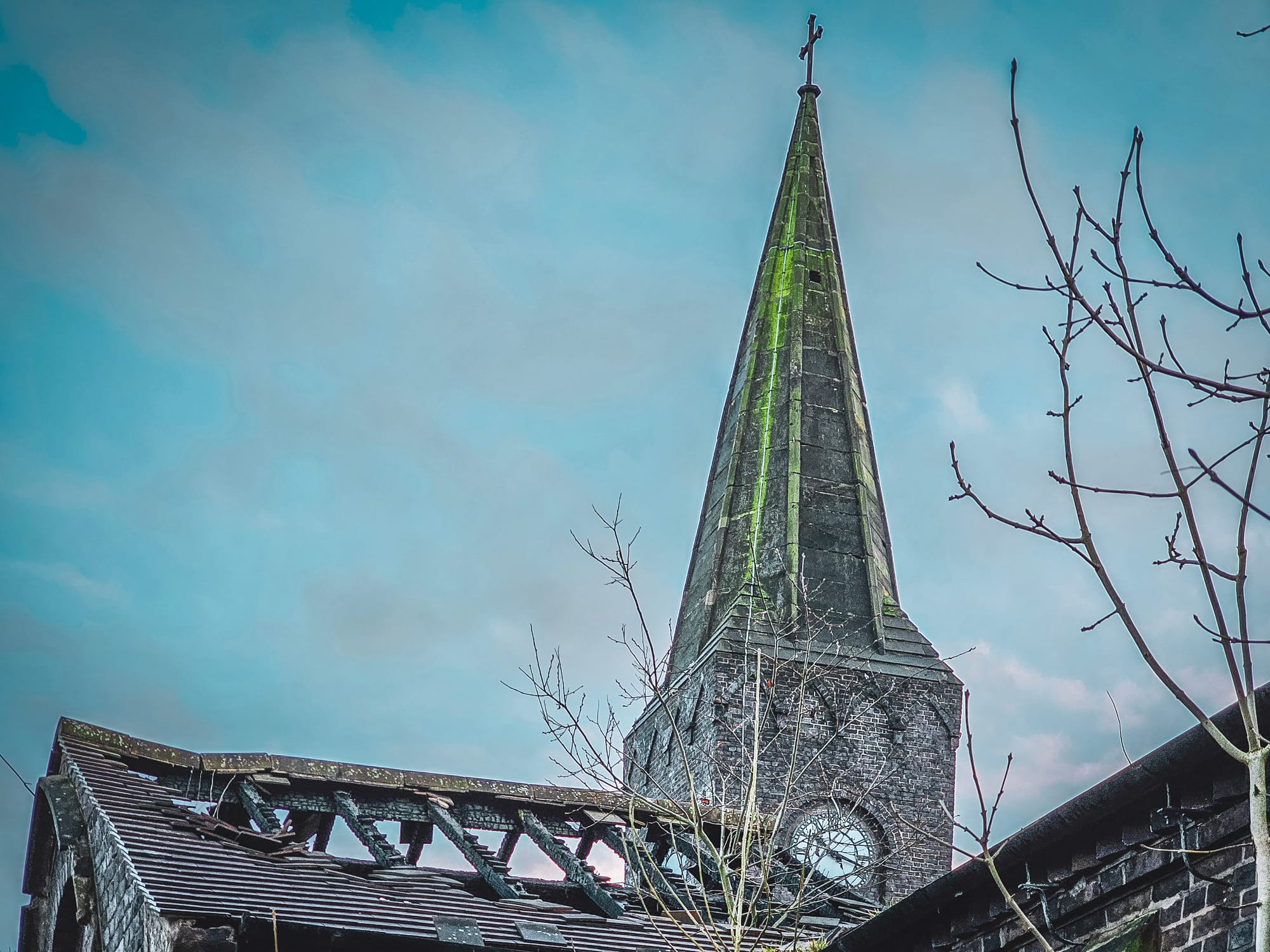
The St John the Evangelist Church in Goldenhill, built between 1840-41 by T. Stanley of Shelton is an architectural marvel showcasing the Byzantine Romanesque style. This style is characterized by its rounded arches, thick walls, and intricate decorative elements reminiscent of early Christian and Byzantine architecture. Over the years, the church underwent several modifications, including the addition and subsequent replacement of a vestry in 1880 and 1891, respectively. Its central tower, crowned with a slender spire, and its distinctive brickwork contribute to its status as a significant local landmark as it is the highest in Stoke-on-Trent and can be seen for miles around.

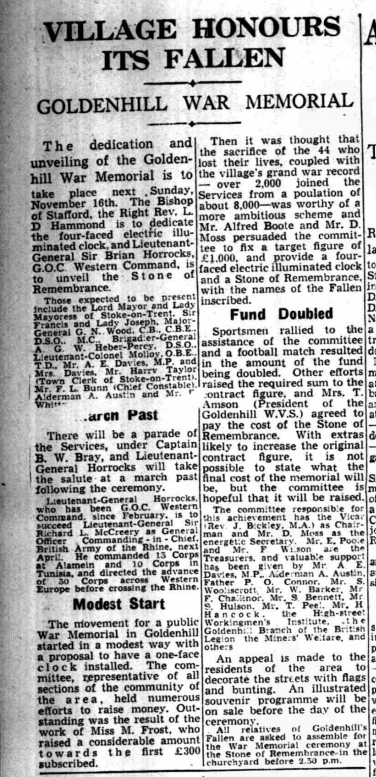
The Sentinel in November 1947 (11th & 17th)
The church features a war memorial clock in its tower, dedicated to the memory of those who lost their lives in the Second World War. Unveiled on November 16, 1947, by Lieutenant-General Sir Brian Horrocks, it includes a four-faced electric illuminated clock and a stone tablet listing the names of the fallen. Additionally, inside the church is a wooden war memorial, honouring the fallen of the First World War. These memorials are integral to the church's historical significance.
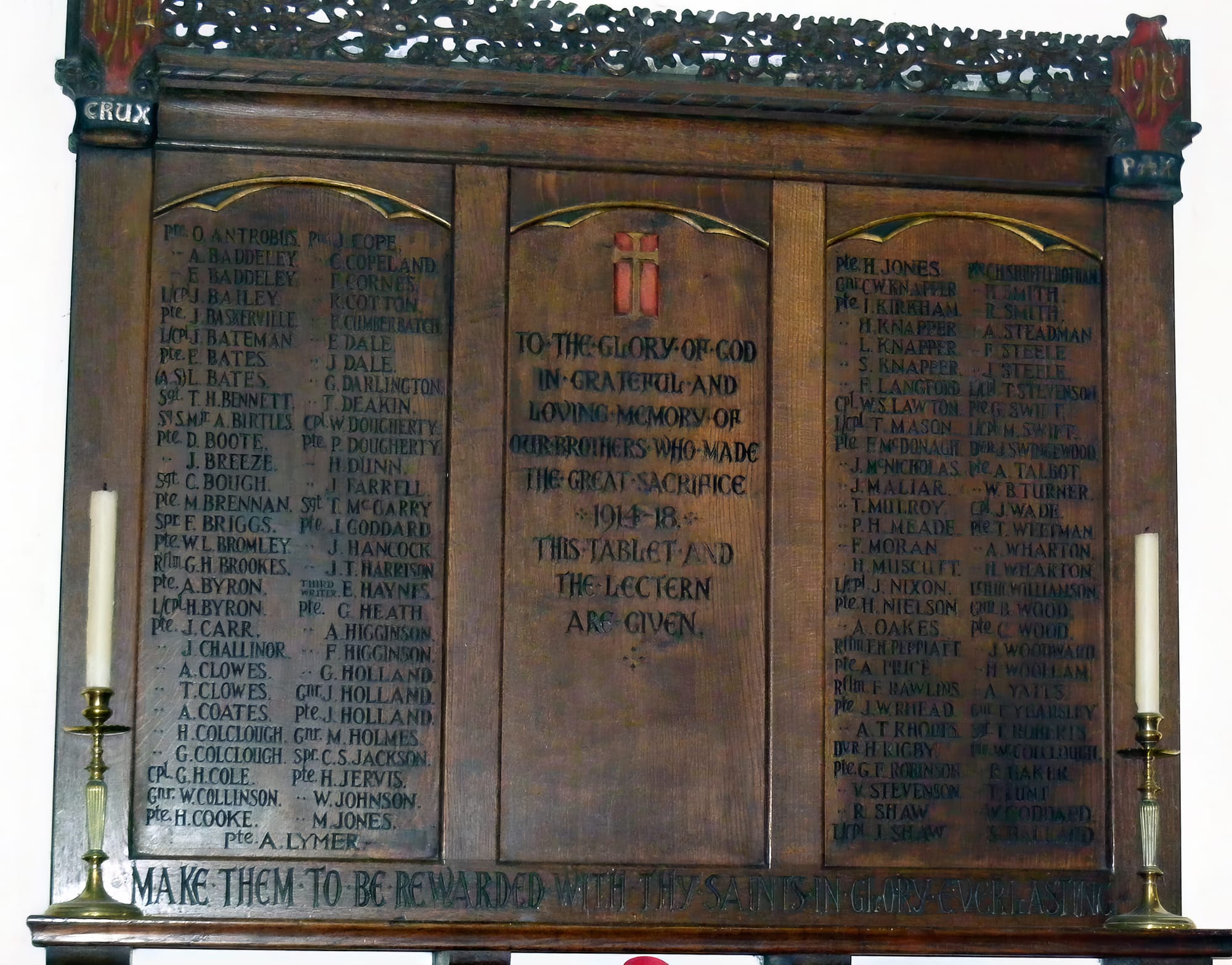
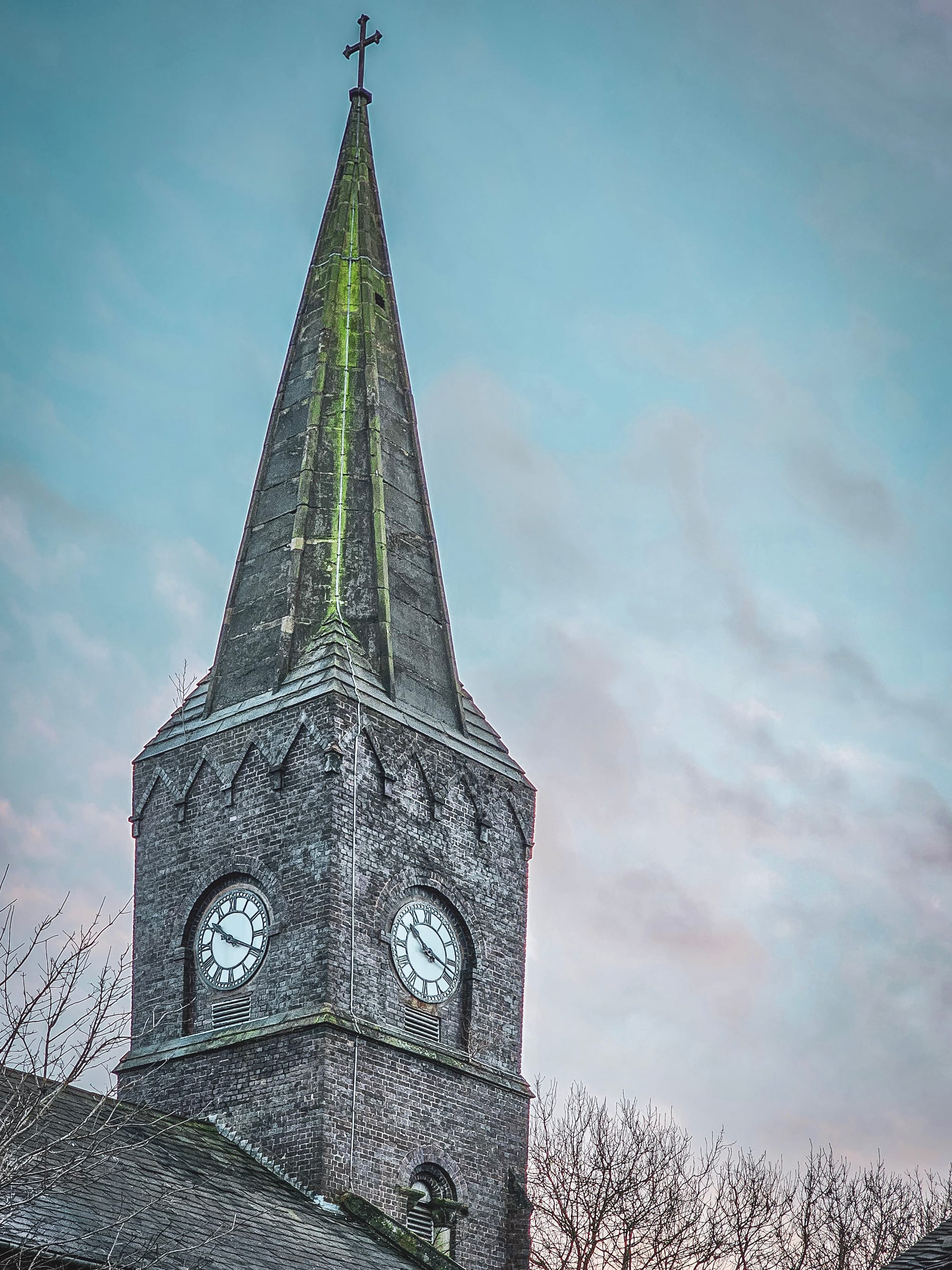
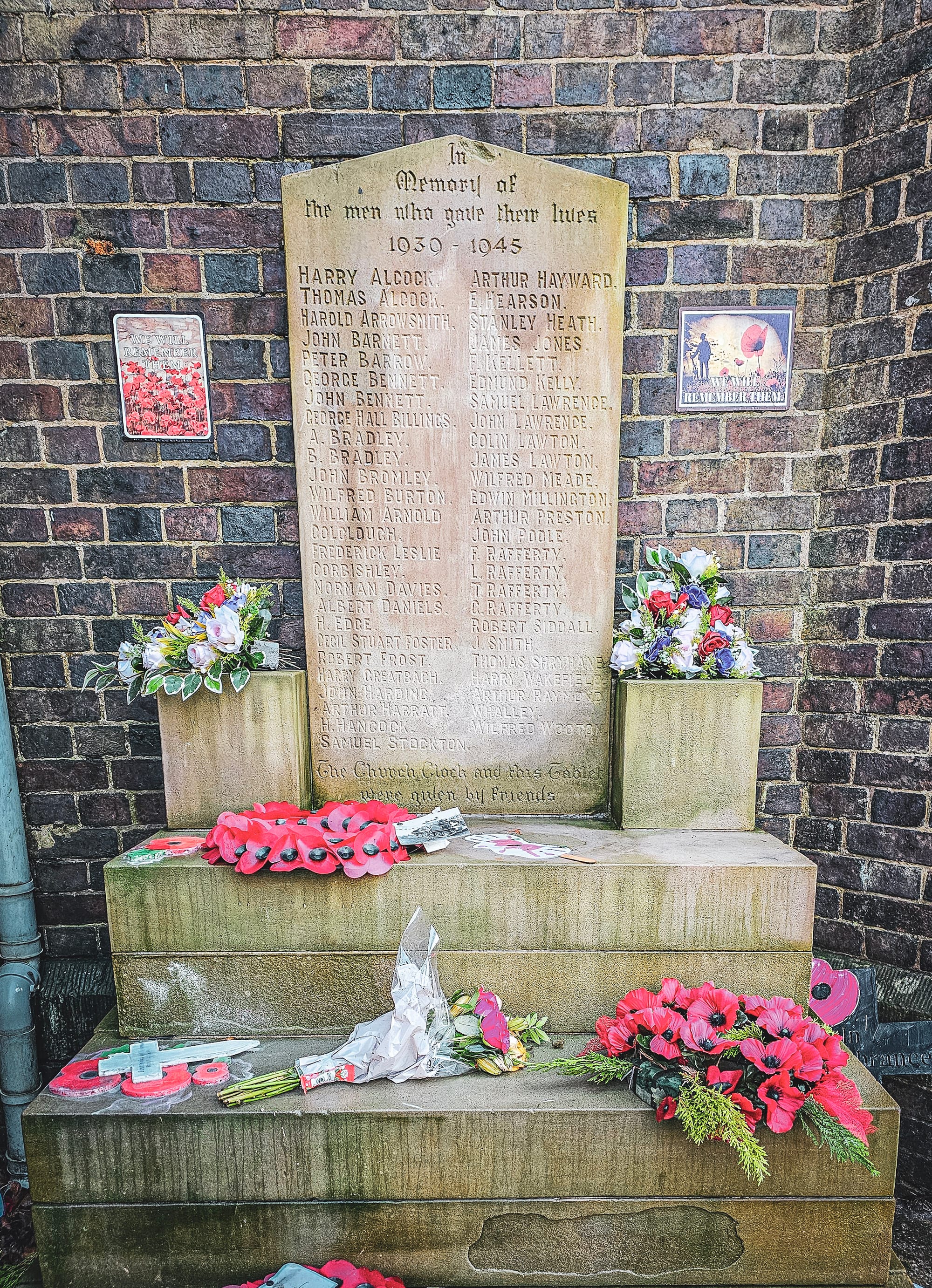
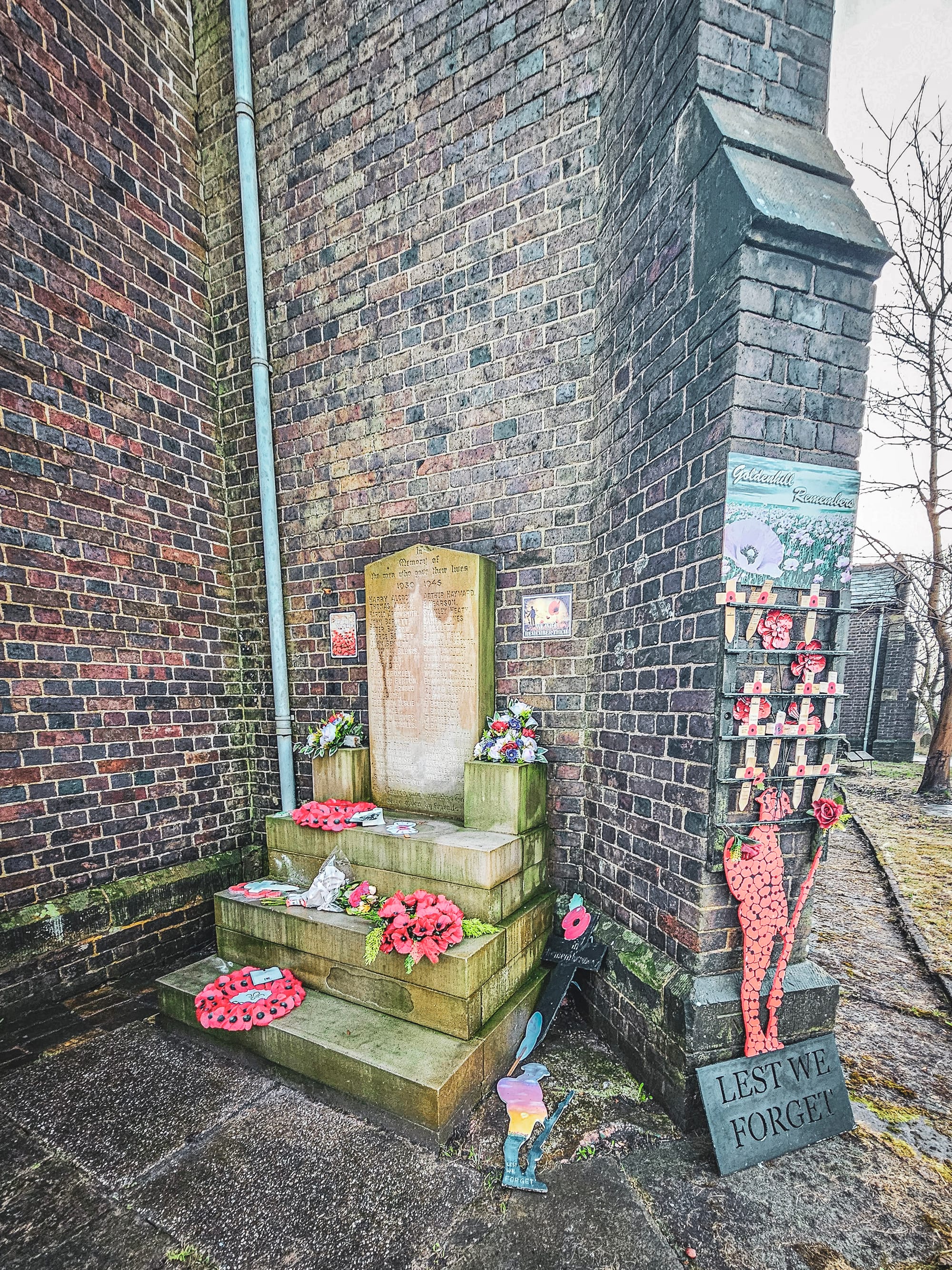
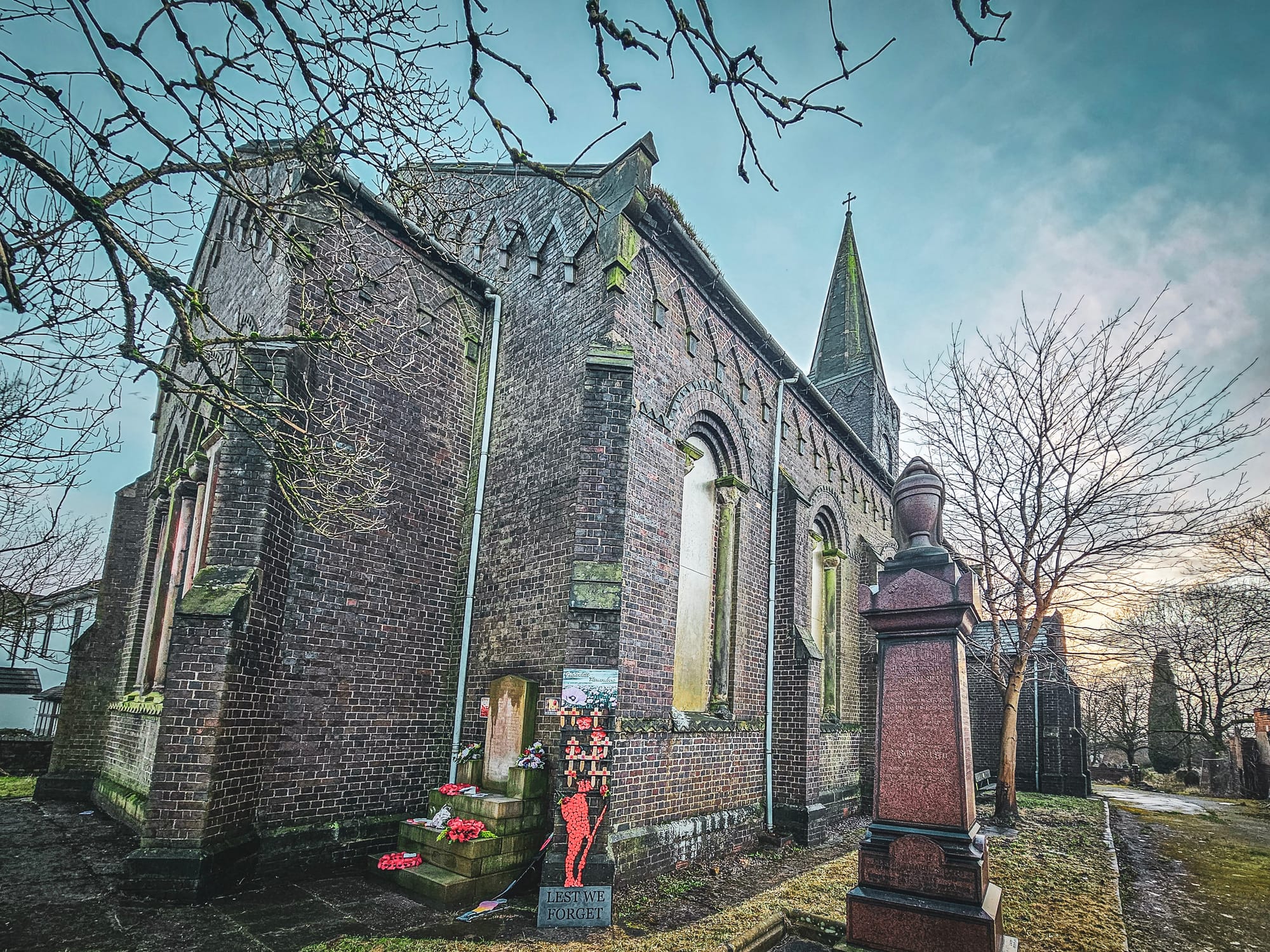
The war memorials
The interior of St John the Evangelist Church in Goldenhill presents a serene elegance. It features high ceilings supported by robust columns, creating a grand and spacious ambience. The church is adorned with beautiful stained-glass windows, allowing natural light to cast a tranquil glow within. The layout includes a nave with fixed pine pews and a timber truss roof, adding to the church's aesthetic charm. The chancel area, marked by a carpeted floor, rises gracefully with two wooden steps, contributing to the overall solemn and peaceful atmosphere of the church.
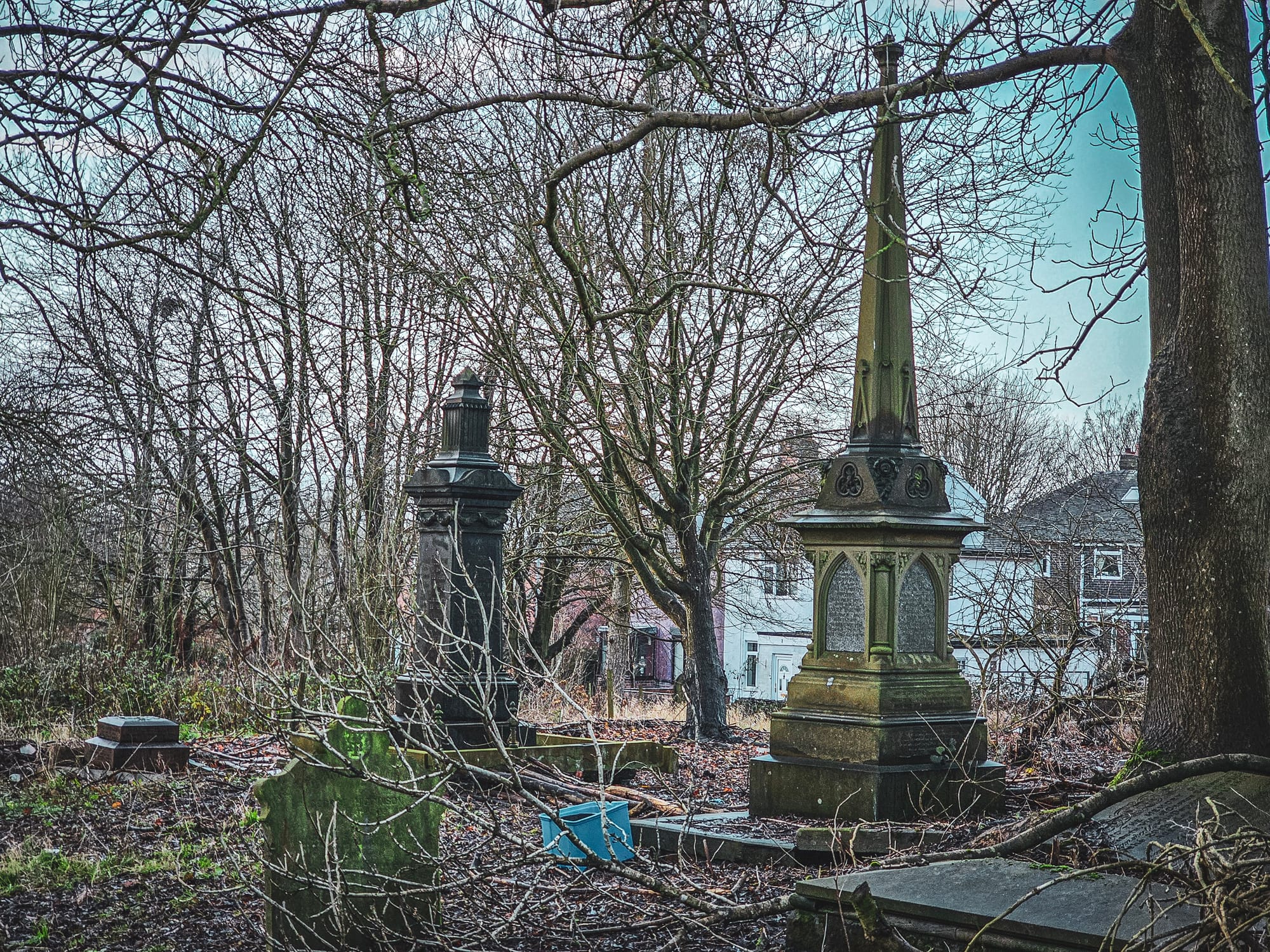
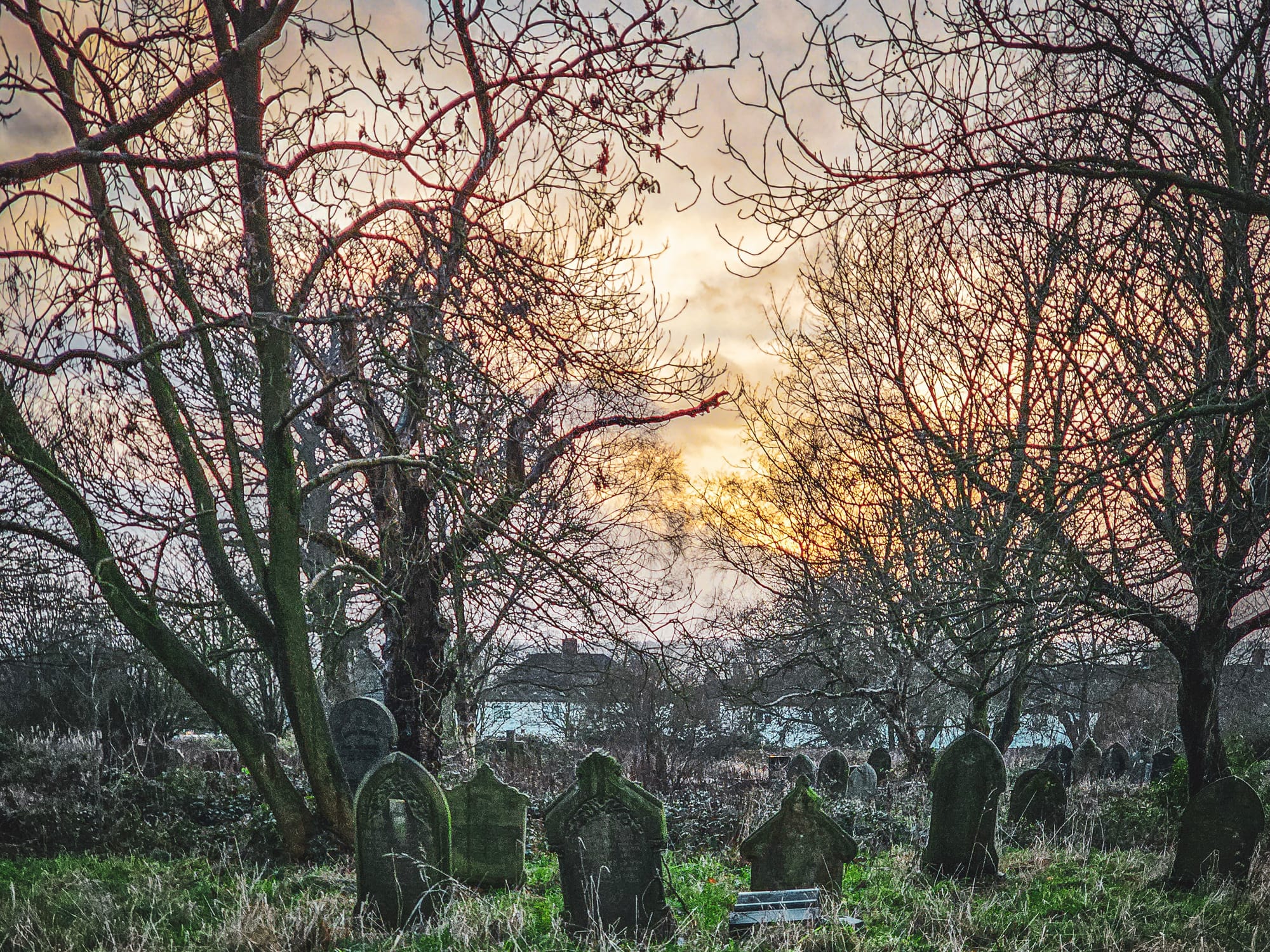
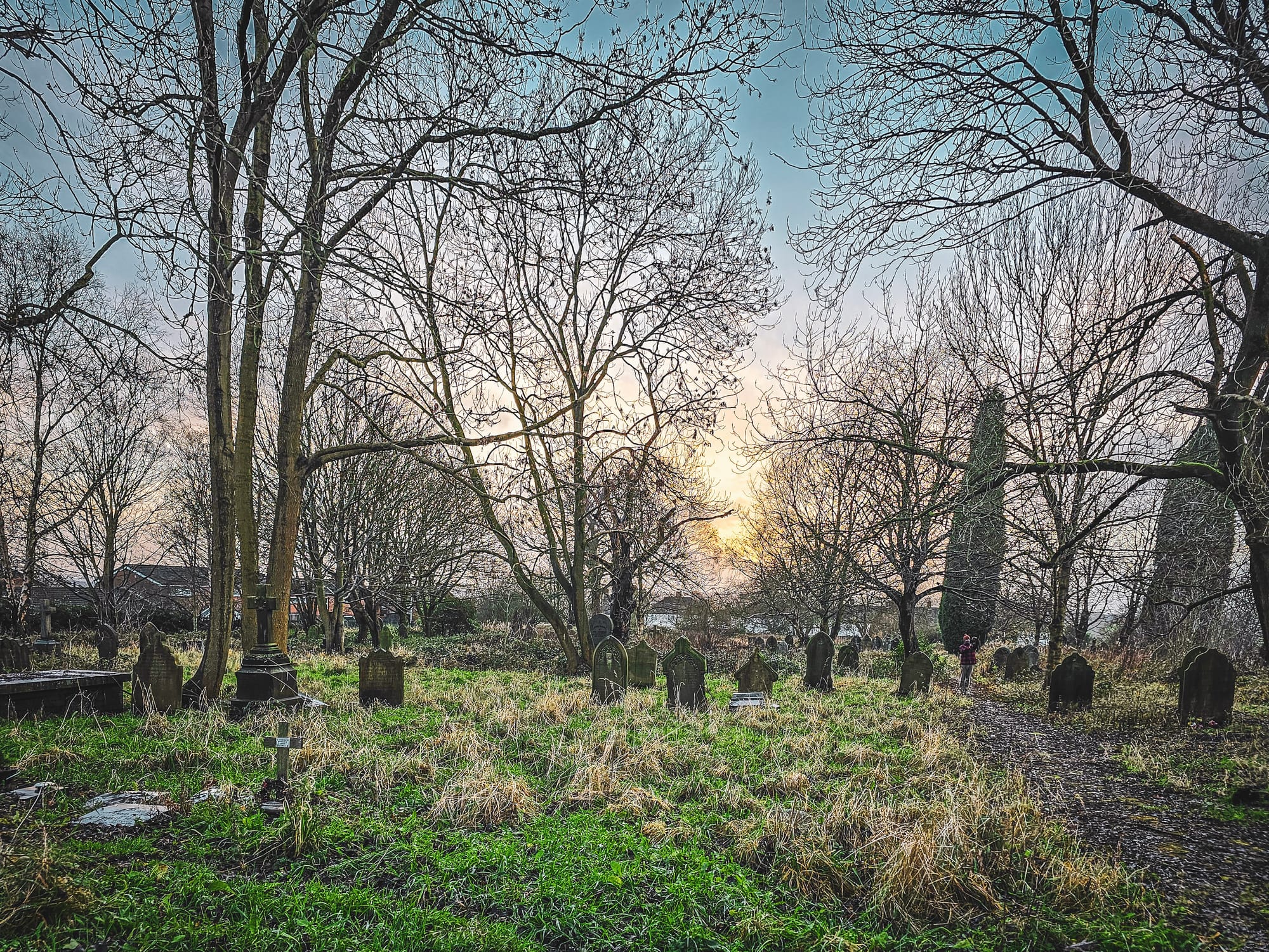
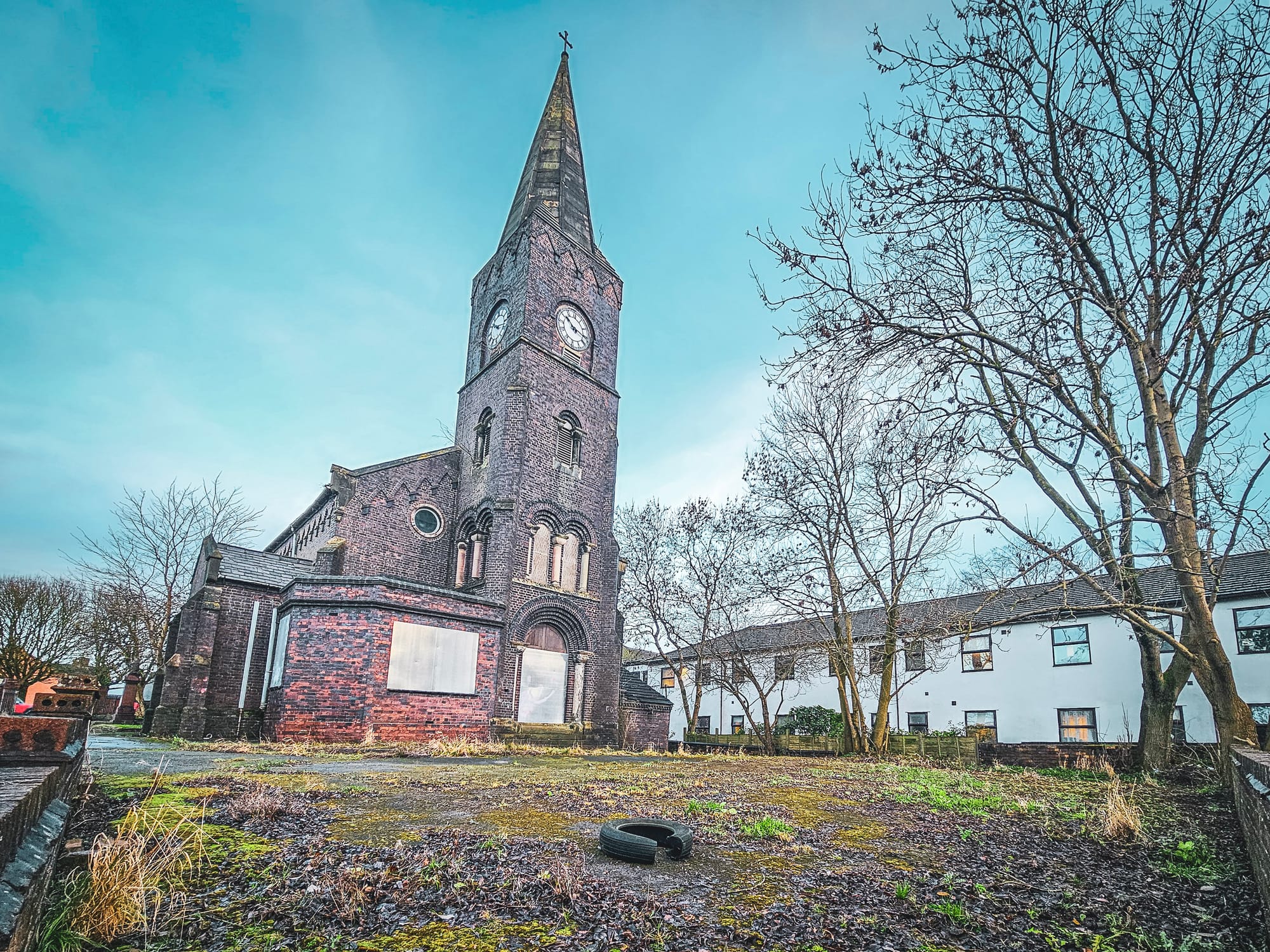
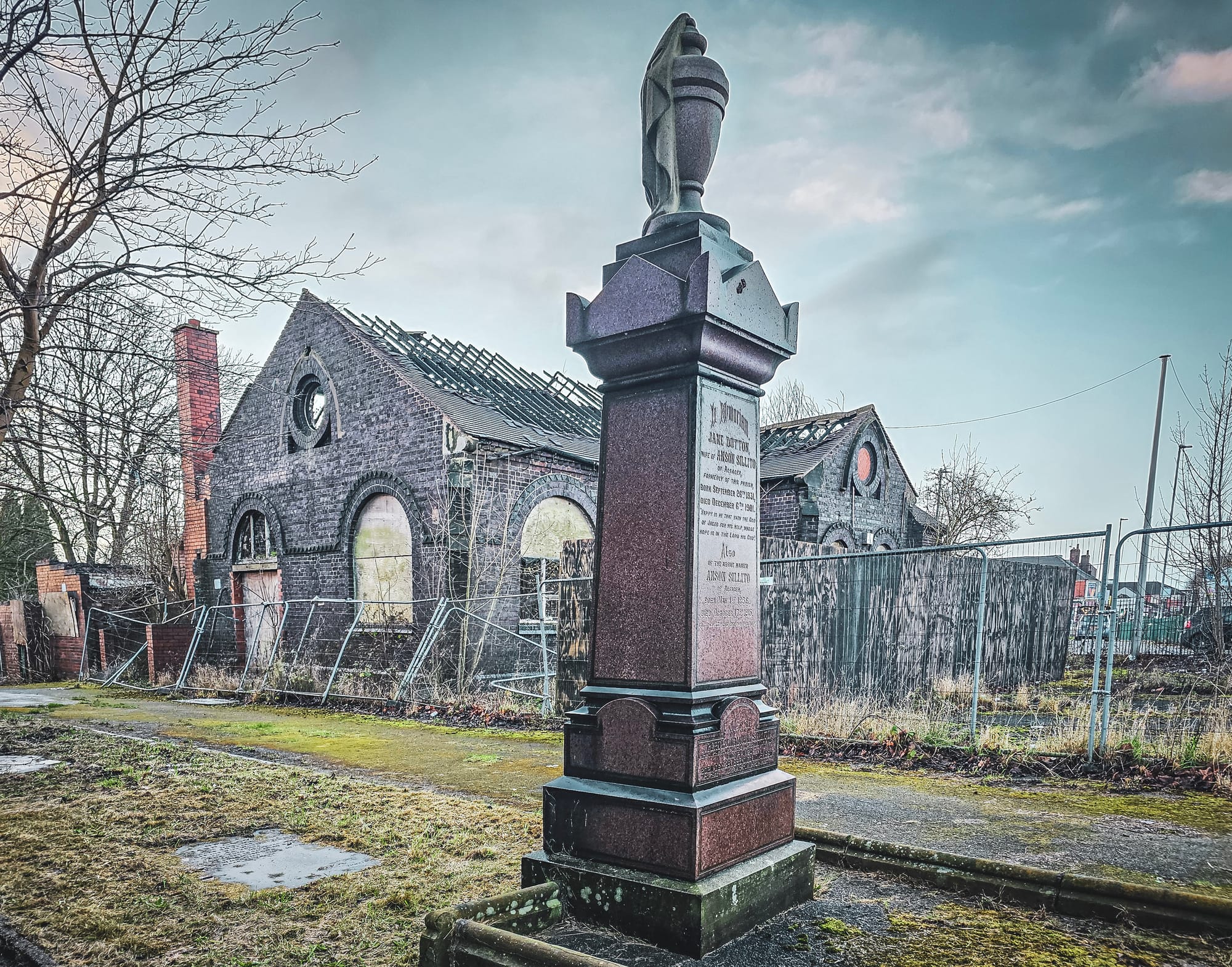
The current state of the graveyard
The overgrown graveyard, once a place of reverence, now grapples with issues like anti-social behaviour and neglect. It presents a scene of disrepair and neglect. Overgrown with vegetation, it is marred by toppled and broken gravestones, reflecting a lack of maintenance. This state of the graveyard raises questions about who is responsible for its upkeep, particularly since the church's closure. The neglect suggests a disconnect with the community's past, as the resting place of many seems forgotten. The future of this site, whether it faces potential demolition or redevelopment, remains uncertain, highlighting concerns about the preservation of local heritage and respect for those interred there.
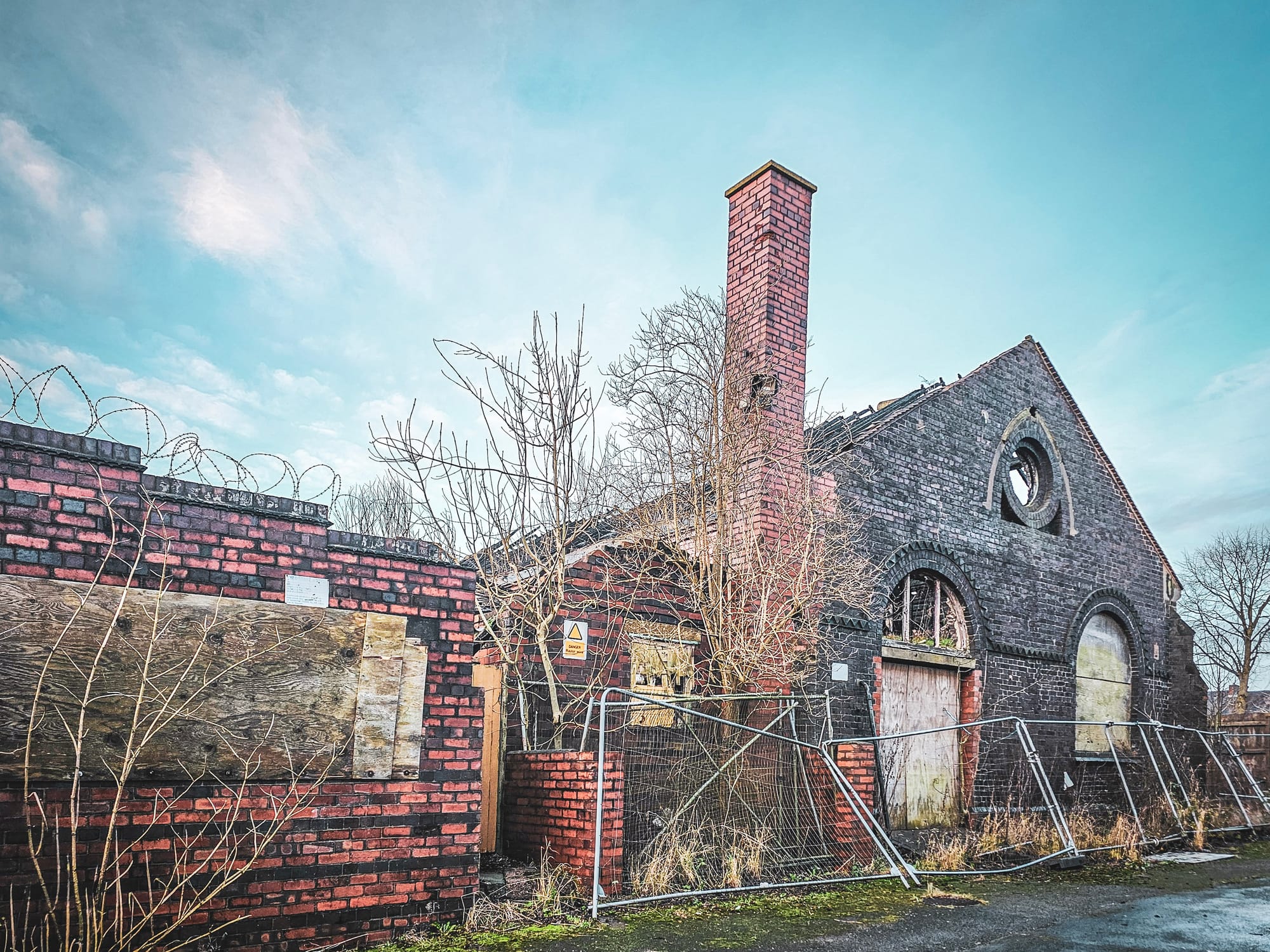
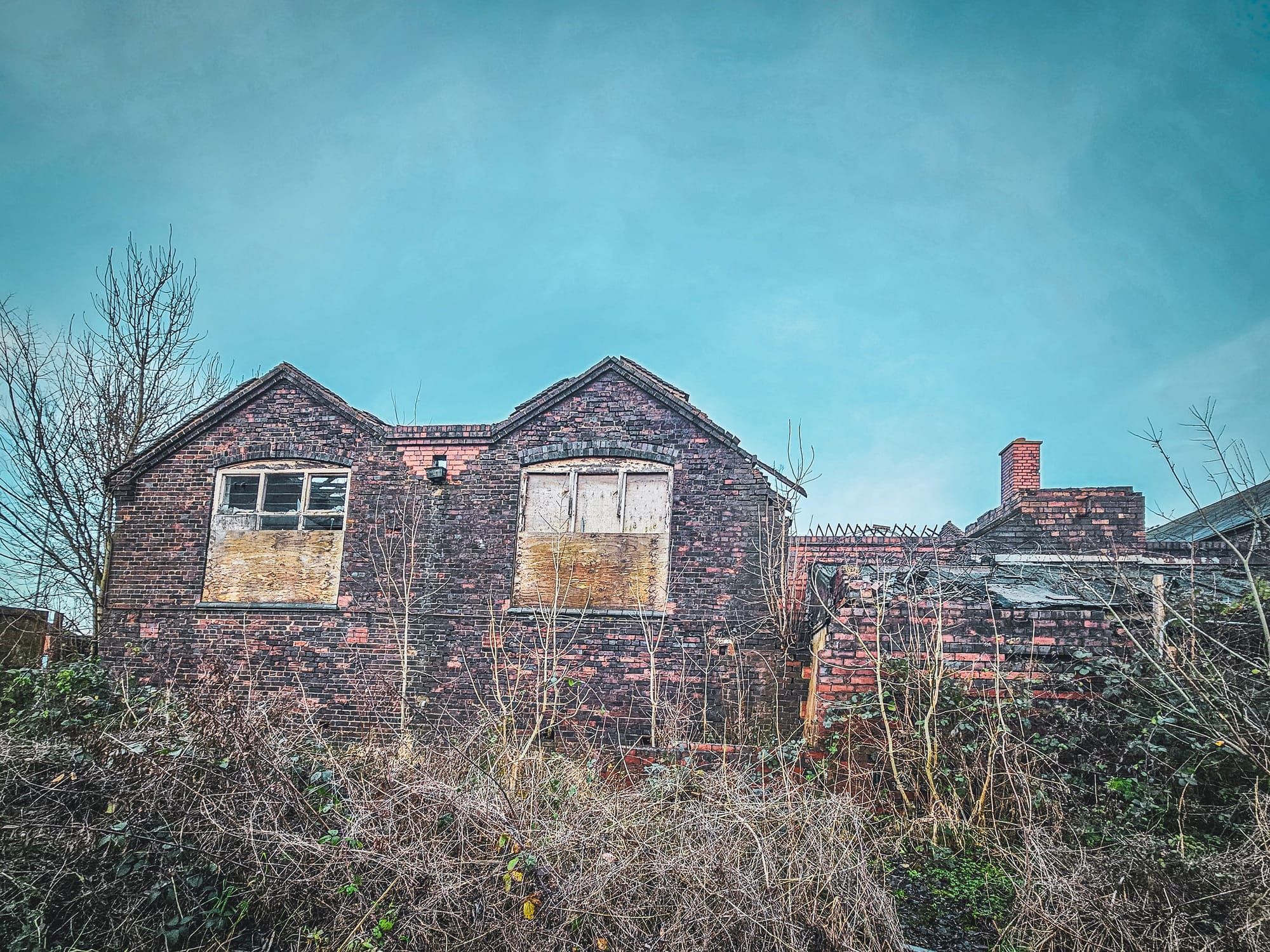
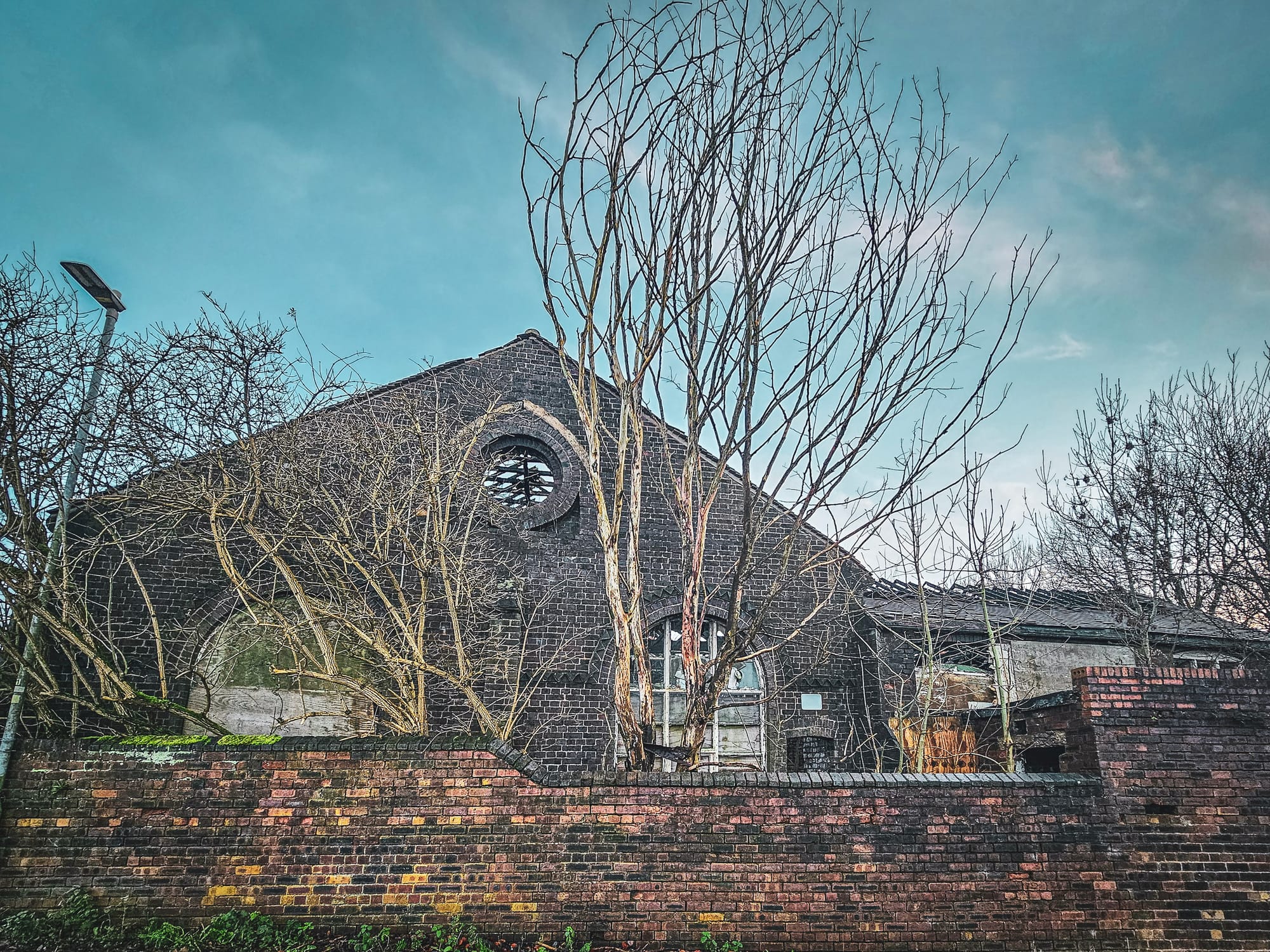
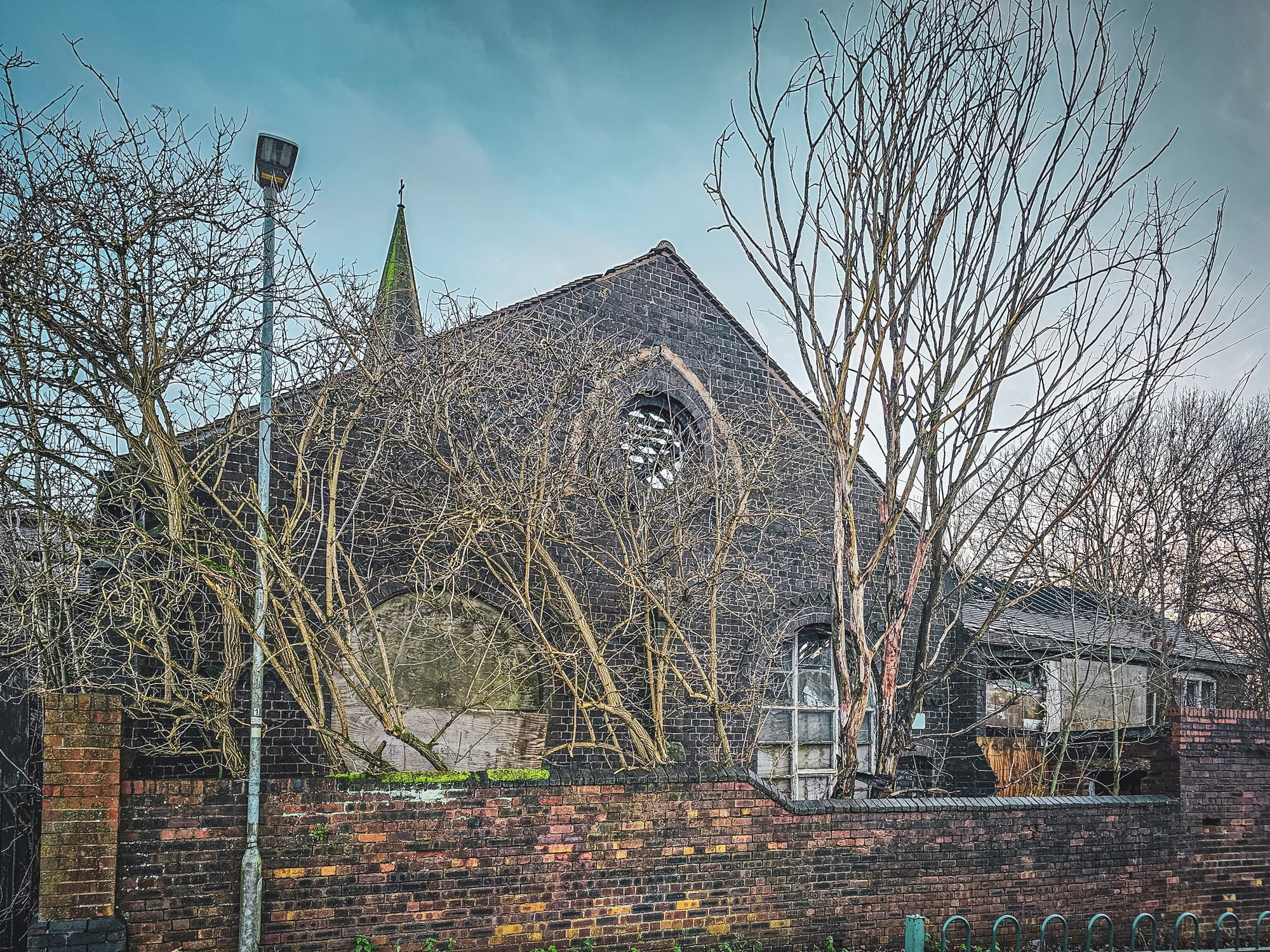
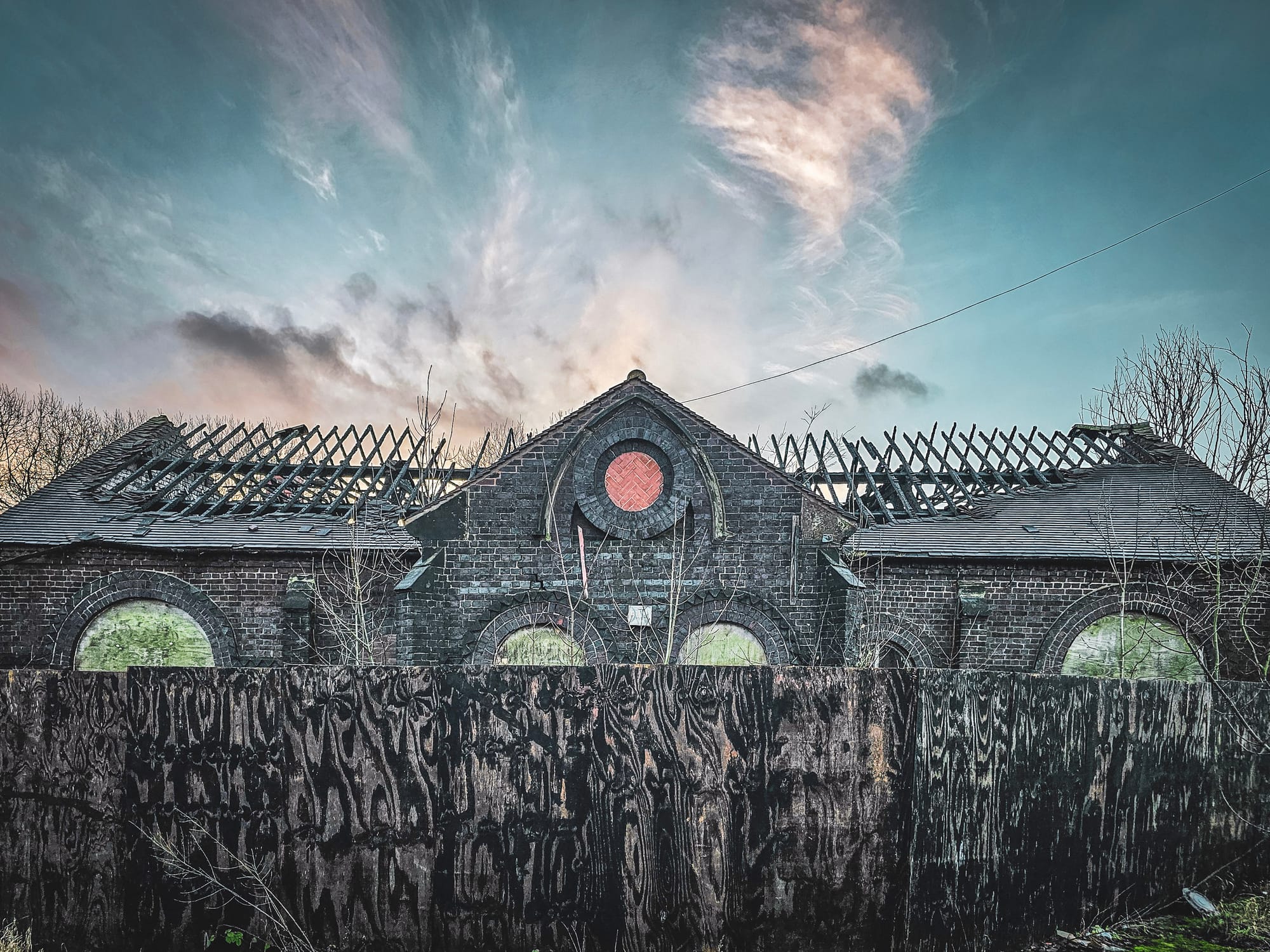
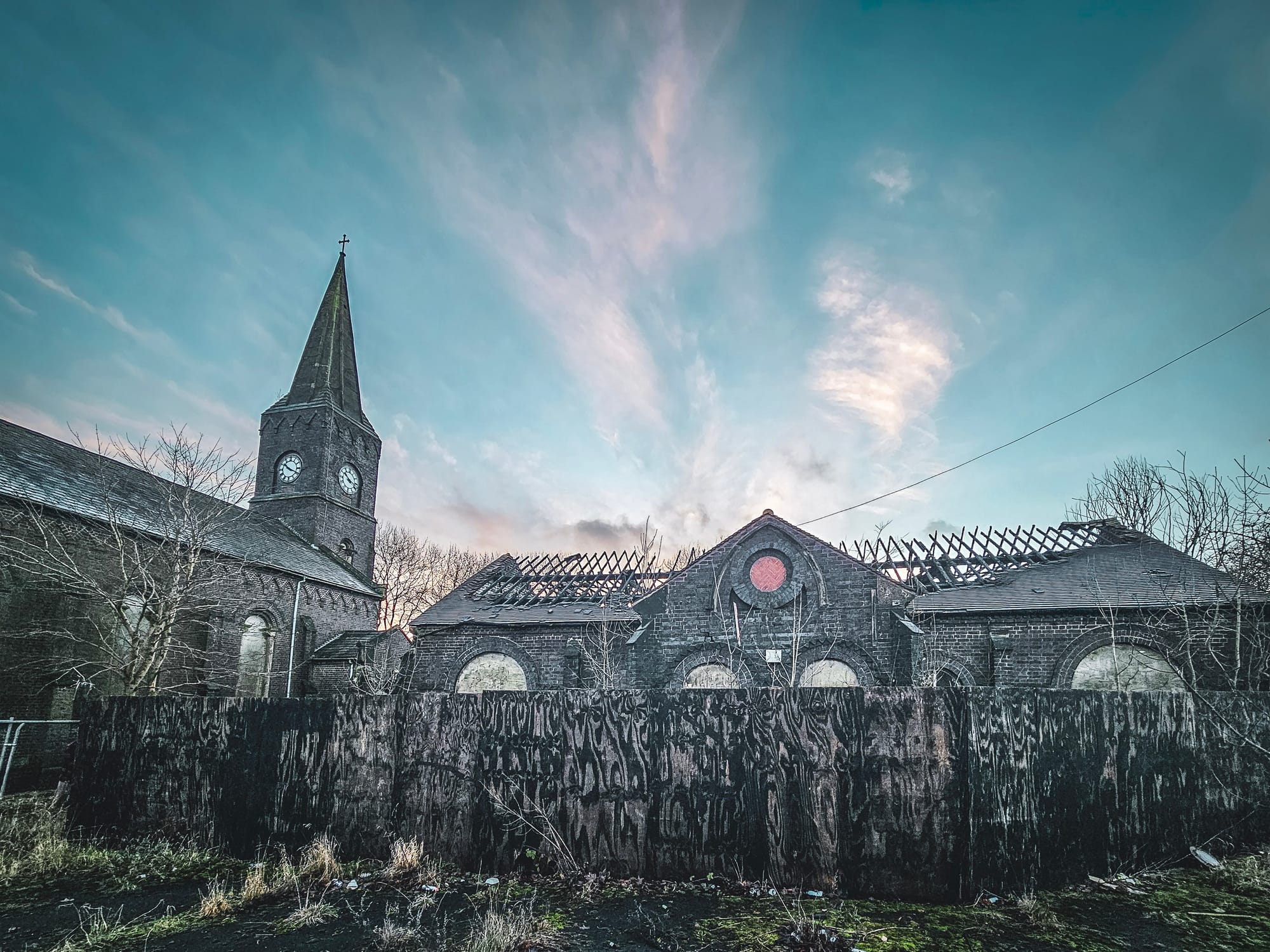
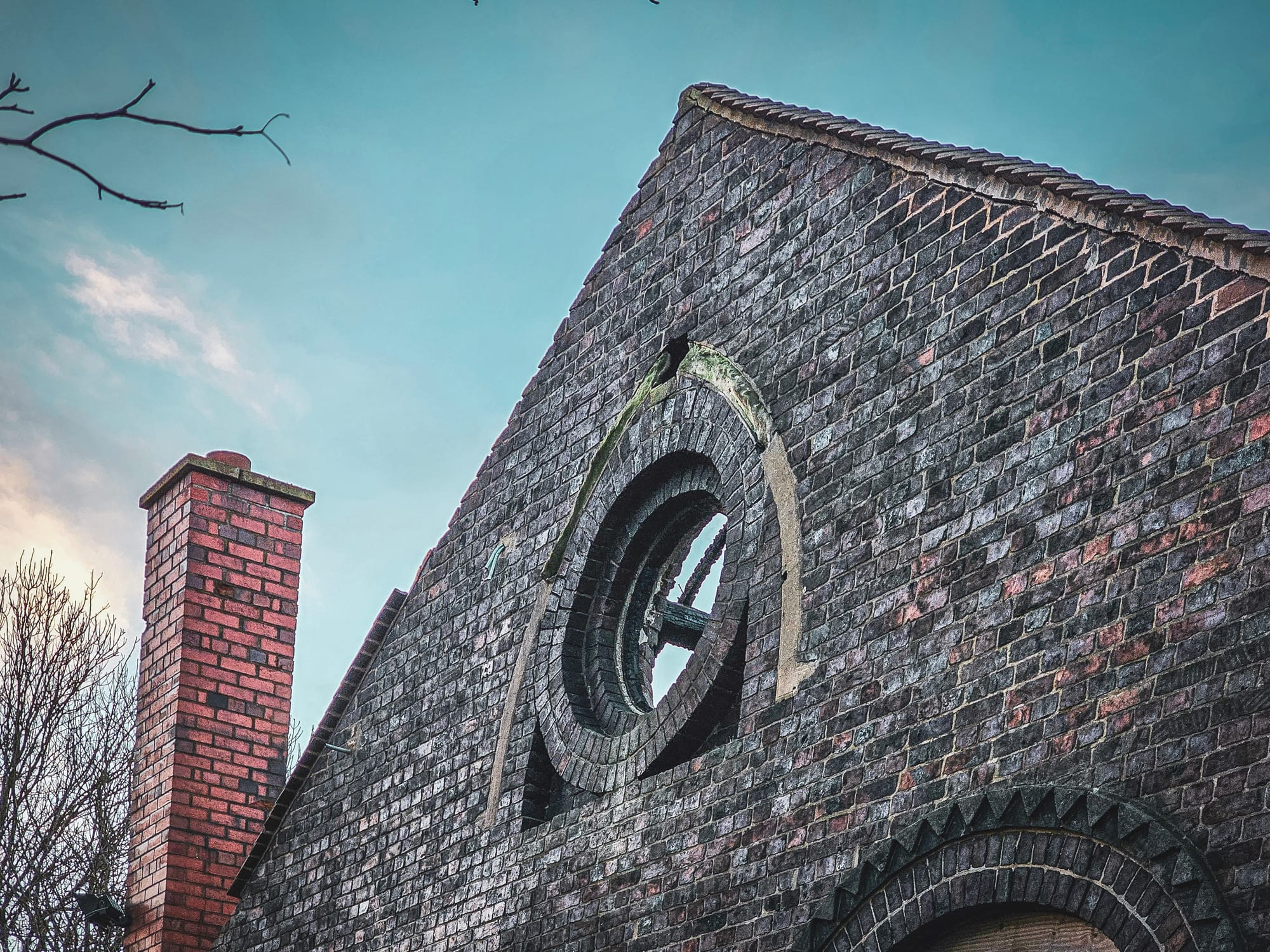
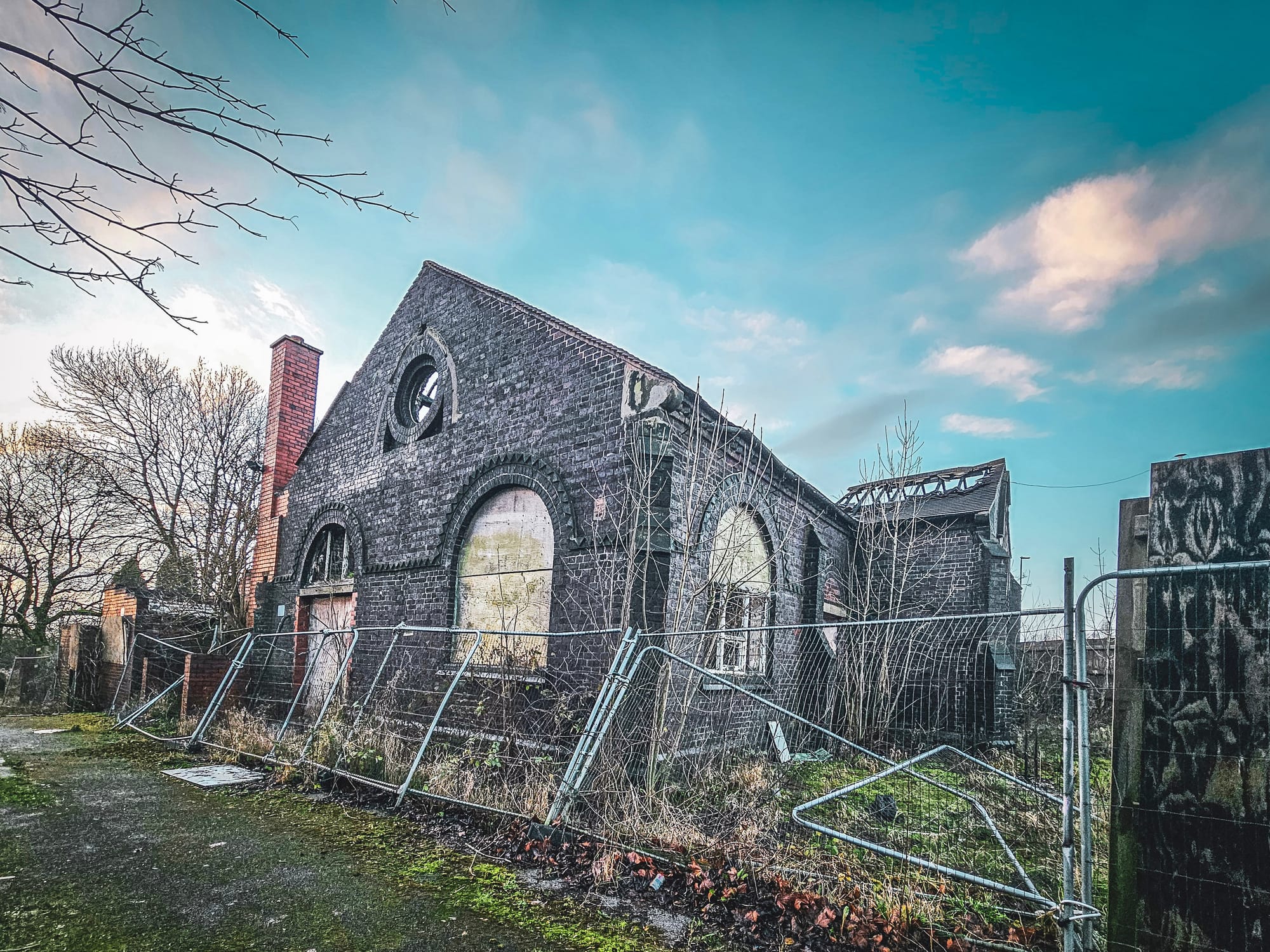
The school as it stands
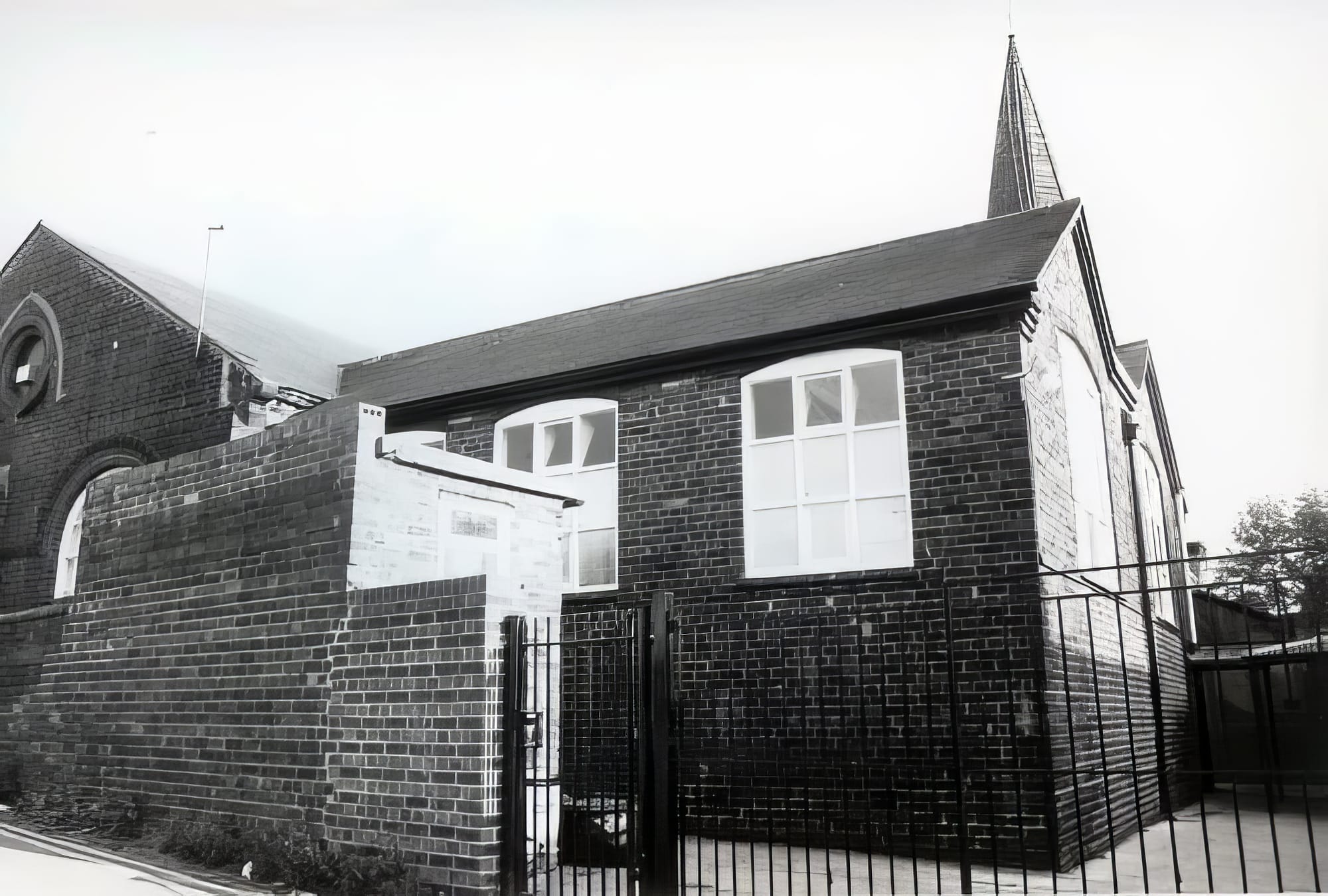
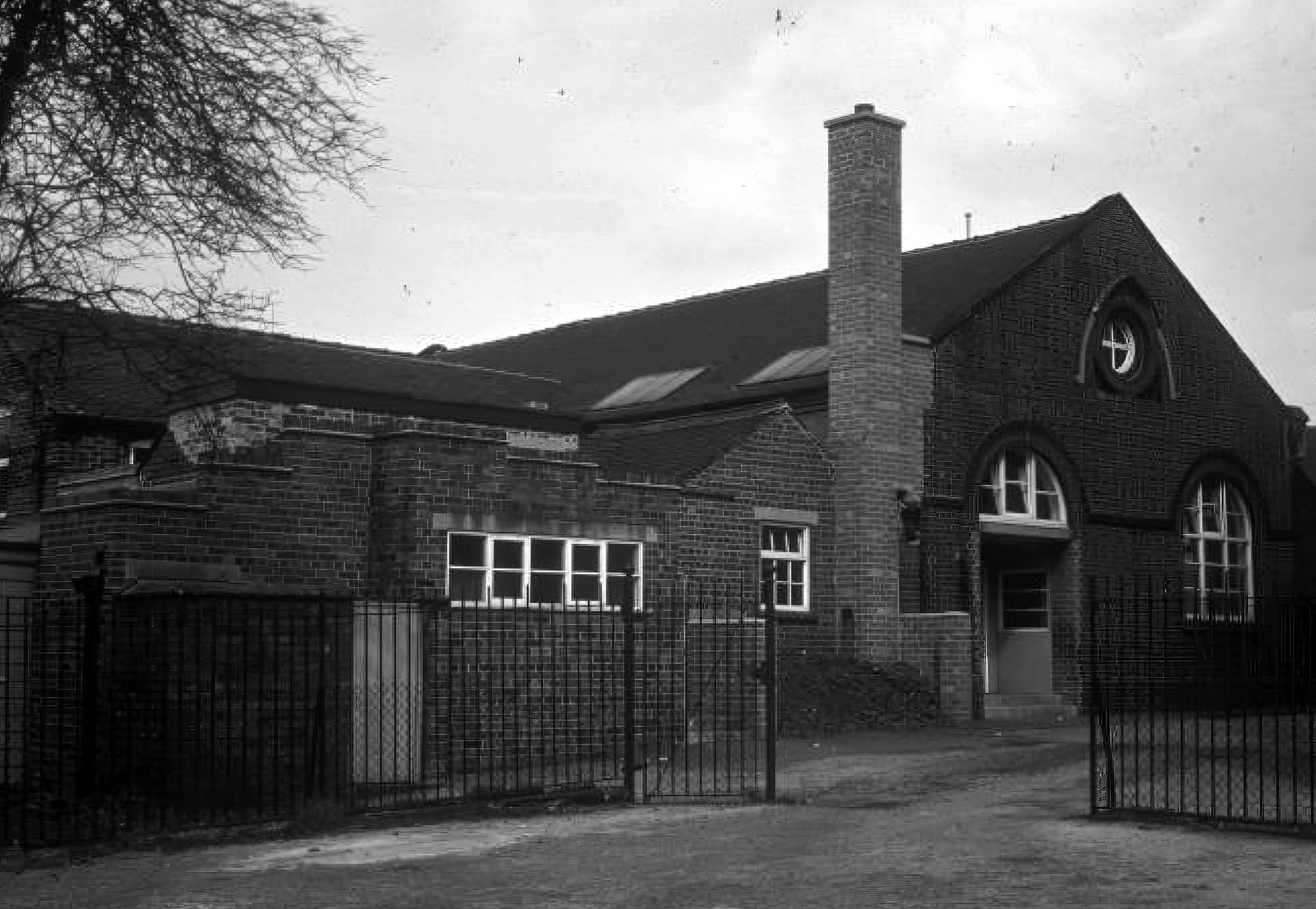
The school before it closed
Since its closure in early 2013 due to dwindling congregation numbers, the church has faced neglect and deterioration. This decline extends to the adjacent old school building and the graveyard. The school, privately owned since 2006, has been a target for vandalism and fires, further emphasizing the area's social challenges. After suffering a significant fire, it was declared a dangerous structure. Despite legal actions taken in 2017 to address its deteriorating state, it remains in disrepair. This situation mirrors the church's challenges of preservation, highlighting the broader issue of maintaining historical structures in the community.
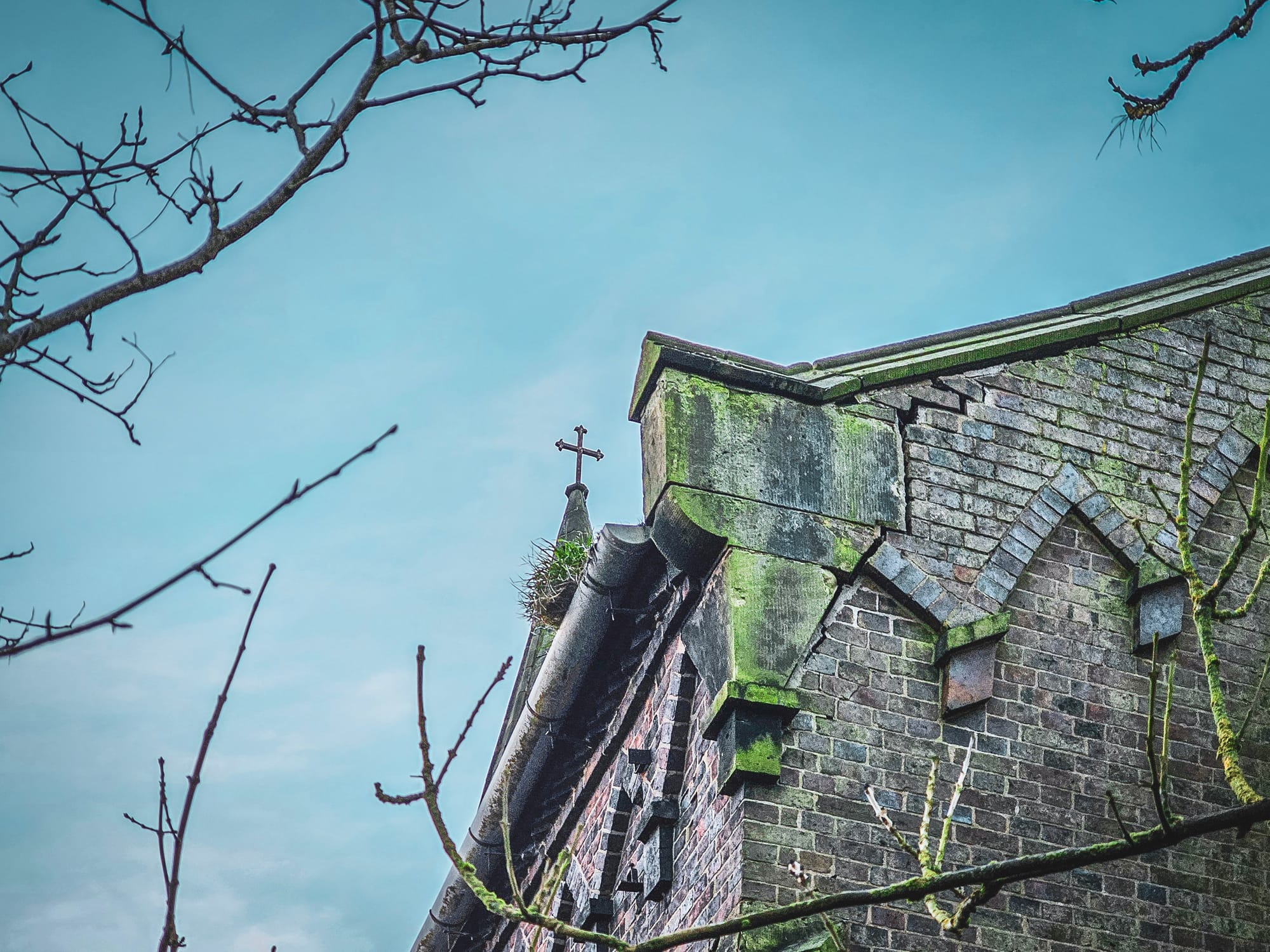
The preservation of St John the Evangelist Church is of paramount importance due to its historical and architectural significance. To prevent further deterioration, there's a need for immediate action. Ideas for repurposing these structures need to be explored because they are serving absolutely no one by sitting empty and ending up burned out like the school next to it and like many other buildings across Stoke-on-Trent.
Thank you for reading!
If you like what you have read, please feel free to support me by following and signing up for my newsletter and/or buying me a coffee!

If you love our local history, don't forget to follow me, check out more of my videos and my website http://www.theredhairedstokie.co.uk
You can now also join my Patreon - www.patreon.com/TheRedHairedStokie
Check out my recommended reading list
